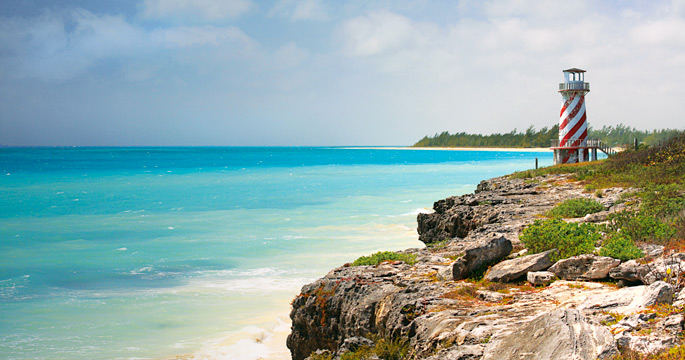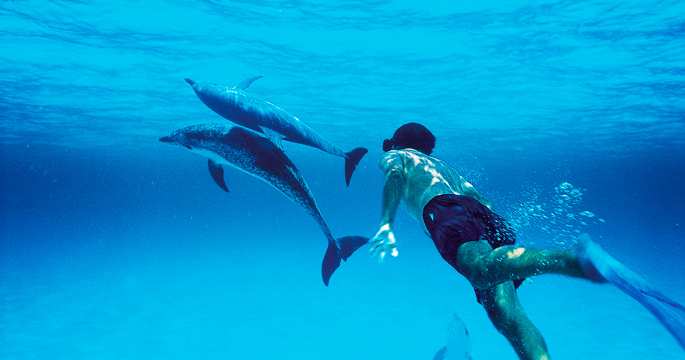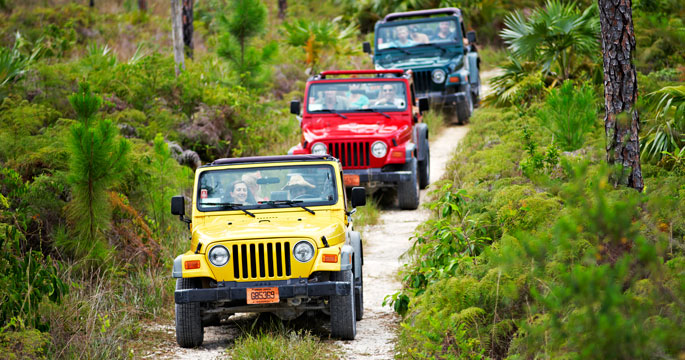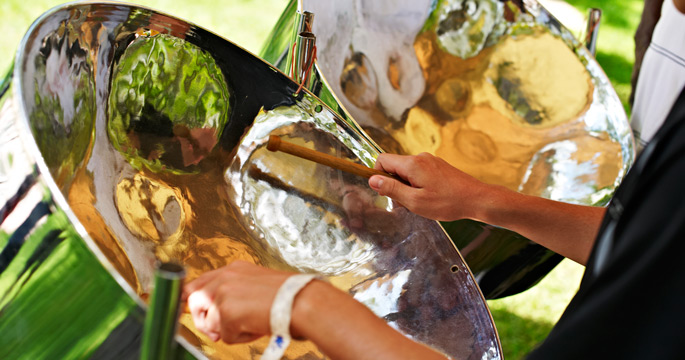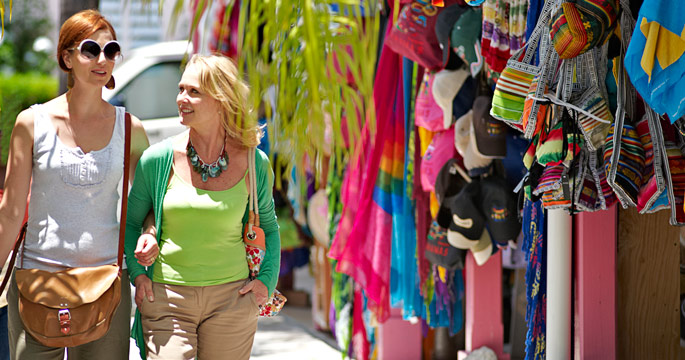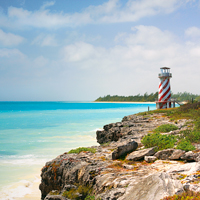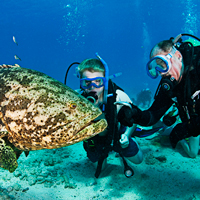Easy to reach, affordable and packed with activities, the island of Grand Bahama is a vacation destination all can enjoy. From the civilized luxuries of Freeport and Port Lucaya to the traditional villages and undeveloped beaches that dot the rest of the island’s coastlines, there’s a lot to discover.
1 A Diverse Destination
Like Goldilocks’ middle bear, Grand Bahama Island offers a just-right mixture of attractions and amenities for all ages and tastes. Freeport is clean, safe and family-friendly, but also ready to host a night on the town with fine dining, dancing to live music and a bit of casino action. Water sports from mild to wild await in the clear waters, while the land-bound can opt for anything from duty-free shopping to a round of golf, a jeep safari or just a relaxing afternoon on the beach.
2 Easy Access
Grand Bahama Island is the closest major vacation destination to Florida. The cruise ships come calling, while longer-term guests arrive by both air and sea with equal ease. Flights connect daily from southern U.S. gateways, and charter airlines offer direct service from cities as far away as Canada. Private boats have a 60-mile run across the Gulf Stream to West End, while a fast ferry makes a daily run from Fort Lauderdale to Freeport, with a one-way ticket going for as little as $50.
3 Room Rates
A handful of five-star properties on Grand Bahama are worth a splurge, but what makes the Freeport and Port Lucaya area a favorite is the abundance of three- and four-star hotels and resorts at attractive prices. Book smart and you can get an ocean-view room for around $200 or a canal-front three-star within easy walking distance of a prime beach for less than $100 a night.
4 Life’s a Beach
Grand Bahama Island has more than 180 miles of coastline. The north shore mixes beach, marsh and mangrove, but most of the south side is swathed in pure sand. This means beaches for all tastes, from the popular strands near the resorts to deserted stretches miles from town. And these beaches are made for play, offering everything from high-flying parasailing adventures to horseback rides in the surf and sunset beach parties.
5 Sweet Water
Unlike drier islands to the south, which must rely on rainwater conservation and saltwater desalinization, Grand Bahama has abundant supplies of fresh water. Below the surface, the limestone substrate is riddled with underground rivers and caverns that trap and hold rainwater like a huge natural cistern. Hotels are able to tap into these reserves to keep pools sparkling and showers flowing.
6 Natural Attractions
While Freeport and Port Lucaya are lively resort destinations, most of Grand Bahama Island remains in a natural state. You can get a sampling of the native flora and fauna at nearby Rand Nature Center or venture eastward to Lucayan National Park, which is home to more than 250 species of birds. Just across the road is a wild expanse of perennial-favorite Gold Rock Beach.
7 Blue Waters
Beckon While the island’s north coast is bordered by extensive shallows, the south side sits close to deep blue water. A fringing reef shelters the beaches, creating calm water for swimmers and underwater adventures for snorkelers, while less than a mile away lies an ocean playground that is a favorite with divers, fishermen and sailors.
8 Local Flavors
When dinner ingredients swim within a stone’s throw of the shore, it’s no surprise that good seafood is easy to find. Some of the best comes from the least assuming venues—rustic fish shacks with names like Robinson’s Seafood Delight, De Conch Man and Daddy Brown’s. For an authentic taste of the Bahamas, served with a side of beach party, stop in for the Wednesday night fish fry at Smith Point, which has become a local tradition.
9 Many Menus
If lobster, conch and fresh fish aren’t enough, the Freeport area offers more than 80 restaurants serving up a wide range of local and international cuisines. You’ll find everything from upscale Italian to pub food, Pacific Rim creations and even an innovative chef serving up Bahamian-Mexican fusion.
10 Authentic Undertones
With its modern architecture and U.S. influences, Freeport seems comfortably familiar, yet just different enough to remind you that you are in the islands, mon. For a richer Bahamian experience, head out to the quieter villages to the east or west, where the old ways still hold. Keep time to the rhythms of a rake-n-scrape band, plan your visit around a Junkanoo parade, or head to the Conch Cracking Festival in McLean’s Town.

